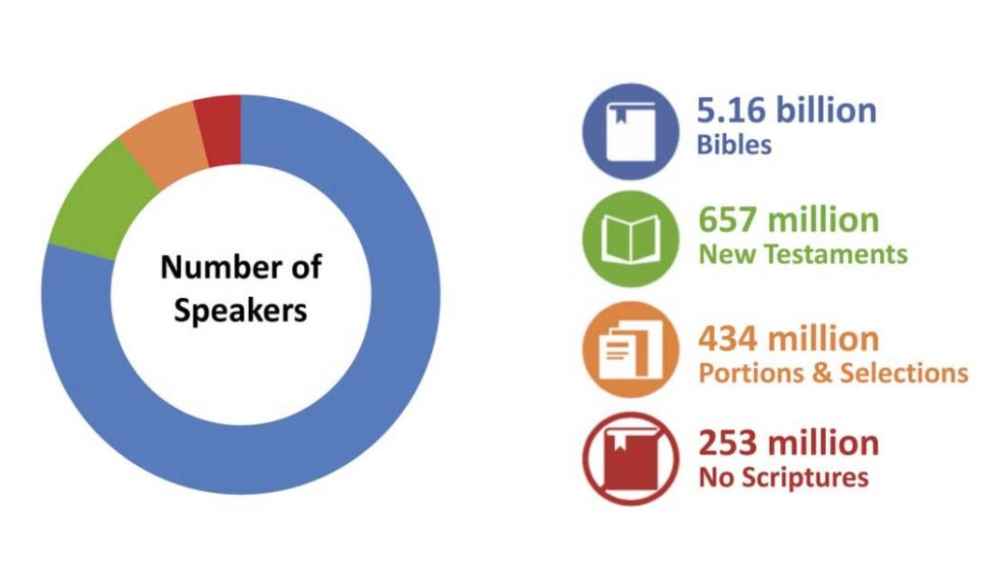Bibles for 98 per cent of the world is in sight
More and more language groups will get Scripture in the next decades
The good news is that Scripture is available in languages spoken by 90 per cent of the world’s population. The even better news is that figure should be taken up to 98 per cent by 2035, according to Alexander Schweitzer, head of Bible translation for the United Bible Societies (UBS).
Schweitzer has been in Sydney this week for a gathering of Bible Society leaders. Called the ‘UBS Roundtable Exchange,’ the gathering is where the 148 Bible societies meet to collaborate on their projects, and translation is their core aim.
It’s quite common to hear about the number of languages the Bible has been translated into – about half of the 7,000 languages in the world have some Scripture. Of those languages, 648 have a full Bible, and another 1,432 have the whole New Testament. But the group of languages that has the ‘full Bible’ are spoken by 5.16 billion people.
The group of languages that has the ‘full Bible’ are spoken by 5.16 billion people.
By comparison, the languages without any Scripture are spoken by 252 million people. So Schweitzer, quite a cautious and precise man, is happy for Eternity to say 98 per cent of the world’s population will have a Bible or some Scripture in their mother tongue or “heart language” by 2035.
His boss, Michael Perreau, is even more optimistic. He told Eternity earlier this year: “By 2033, if we keep the momentum up, we could see all languages having some Scripture.”
Alexander Schweitzer put out a big goal: increasing access to Scripture by 50 per cent in the next 20 years.
UBS is working on 403 translation projects, with 177 being the first translation of the Bible into a new language. There are also 116 new translations where the existing Bible is more than a couple of generations old.
Schweitzer put a big goal in front of the Sydney gathering: increasing access to Scripture by 50 per cent in the next 20 years. What that means is doubling the number of languages with full Bibles and this will require finishing off 291 current translation projects – and adding a lot of new ones.
“The Bottleneck is people” says Schweitzer. He means that training more and more translators is the key to meeting the ambitious targets. UBS are ramping up training, projecting that an extra 313 translators will be working by 2022. But it’s not just Bible Society workers who will be involved. Bible translation is increasingly done by “local translators” who are native speakers; they may be pastors, grandmothers or workers.
“The old method would take decades to translate the Bible.” – Alexander Schweitzer
Schweitzer describes the change: “There’s the old missionary model – sending out a couple to do the work. Some people still do that but UBS has moved on. The old method would take decades to translate the Bible.” He gives a guide to how long it now takes to do a translation: four years for a New Testament, seven years for the Old Testament – but “some languages and situations are more difficult than others”.
Sometimes the key to going faster is as simple as a bicycle for a local translator or improving the internet connection, so a translator can use the sophisticated software developed jointly by UBS and Wycliffe.
As more languages get translated, some very special cases have emerged. There are more than 400 sign languages in the world with 22 projects in progress. Australia’s Auslan language, used by our deaf community, is one of the most advanced of these projects.




